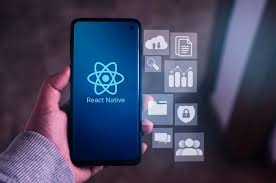How Native Apps Are Transforming Mobile Experiences
In the fast-evolving digital world, mobile applications have become an integral part of our daily lives. From social networking and entertainment to e-commerce and healthcare, mobile apps drive seamless interactions and enhance user experiences. While various approaches exist for app development, native applications have emerged as the gold standard for delivering high-performance, responsive, and feature-rich mobile experiences. The transformation brought by native apps is revolutionizing how businesses engage users, improve efficiency, and create more personalized interactions.
Native apps are designed and built specifically for a particular operating system, such as iOS or Android, using platform-specific programming languages like Swift for iOS and Kotlin for Android. Unlike web-based or hybrid applications, native apps leverage the full capabilities of the device, ensuring superior speed, performance, and responsiveness. This allows developers to create highly optimized applications that deliver smooth animations, seamless navigation, and instant touch responses—elements that are critical to enhancing user engagement.
One of the most significant ways native apps are transforming mobile experiences is through deep integration with device hardware and software. Native applications can access system-level functionalities such as GPS, cameras, accelerometers, fingerprint scanners, and Bluetooth, allowing for innovative and interactive experiences. For example, fitness and health apps leverage sensors to track movement and monitor health metrics in real time, while augmented reality (AR) applications provide immersive experiences using a combination of device cameras and machine learning algorithms.
Security is another major advantage of native applications. Since they are built using platform-specific tools and frameworks, native apps benefit from advanced security protocols, end-to-end encryption, and stringent app store guidelines. Users are more likely to trust native applications because they undergo rigorous app store reviews before being published. Financial institutions, healthcare providers, and enterprise solutions prefer native applications due to their superior security standards and ability to handle sensitive data securely.
Native applications also enhance user engagement by providing a more personalized experience. With access to push notifications, real-time updates, and background processing, native apps keep users informed and engaged even when they are not actively using the application. Personalized recommendations, AI-driven interactions, and adaptive user interfaces further optimize the mobile experience, ensuring that users receive content tailored to their preferences and behaviors.
Another transformative aspect of native apps is their ability to function seamlessly without an internet connection. Many native applications include offline capabilities, allowing users to continue accessing essential features even in areas with limited or no network connectivity. This is particularly beneficial for industries such as travel, education, and enterprise applications, where uninterrupted access to data and services is essential.
As mobile technology advances, native applications continue to evolve, incorporating cutting-edge innovations such as machine learning, AI-powered automation, and 5G connectivity. The combination of high-speed networks and AI-driven optimization is paving the way for more interactive, intelligent, and efficient mobile applications. Businesses that invest in native applications benefit from higher retention rates, increased customer satisfaction, and stronger brand loyalty.
While Progressive Web Apps (PWAs) and hybrid apps offer cross-platform compatibility and cost-effective development, native apps remain the preferred choice for businesses aiming to provide premium, high-performance mobile experiences. The ability to leverage the latest advancements in mobile technology, coupled with the advantages of security, speed, and deep device integration, makes native applications a driving force in transforming mobile experiences.
As user expectations continue to rise, businesses must prioritize delivering intuitive, seamless, and feature-rich mobile applications. Native apps are at the forefront of this transformation, redefining how people interact with technology and shaping the future of mobile experiences.






